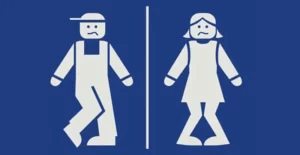Steven Soifer, PhD
ABSTRACT. Successful legislative campaigns, especially those in rural areas, are not often reported in the literature. There are many lessons (to be learned from these campaigns. This case example explores a significant legislative victory by an organization called Tenants United for Fairness-Vermont (TUFF-VT) and applies several different community organizing models in the analysis of the campaign.
[Article copies available for a fee from The Haworth Document Delivery Service: 1-800-342-9678. E-mail address: getinfo@haworthpressinc.com]
In a companion article (last issue), I presented a rural tenant organizing model that drew upon a modified version of the community organizing model used by the Association of Community Organizations for Reform Now (ACORN). The article discussed the application of this model to organizing tenants in Vermont. The result was the formation of a statewide tenants association called Tenants United For Fairness-Vermont (TUFF). TUFF has grown into an organization comprised of 23 tenant associations with 750 members from low-income public housing projects and mobile home parks.
This article describes a successful rural legislative campaign conducted by TUFF that achieved a lot of rent stabilization in mobile home parks across Vermont. This article uses three different community organizing typologies (Delgado, 1994; Montrose and Wilson, 1994; Rothman, 1995) to analyze the campaign, and highlights differences between rural and urban
legislative initiatives. In addition to organizing local tenant associations, another method of promoting tenants’ rights is to implement statewide policy changes that affect renters. TUFE’s lobbying efforts have been very
Steven Soifer, PhD, is an Associate Professor of Social Work, at the University of Maryland, Baltimore, Baltimore,
Journal of Community Practice, Vol. 5(4) 1998
© 1998 by The Haworth Press, Inc. All rights reserved,
Page 1
| JOURNAL OF COMMUNITY PRACTICE|
effective in bringing about legislative change for Vermont renters, With other groups, TUFF helped pass legislation during the 1994 and 1995 Vermont legislative sessions that implemented a statewide mobile home lot rent increase appeals process and extended the protection of the state’s landlord-tenant law to mobile home park residents.
Five years before TUFF’s existence, Vermont mobile home park residents had tried to pass rent control legislation to regulate escalating lot rents in the state. From 1988 to 1994, average lot rents had increased 58 percent, or twice as much as the Consumer Price Index during the same period (Pfeiffer, 1995). Before TUFF’s involvement, there had been no success on this issue; the proposed legislation never even got out of its assigned legislative committee.
At TUFF’s very first meeting, the mobile home park resident representatives raised their concerns about the lot rent issue. While TUFF’s organizer had some reservations about the issue (whether it was winnable, whether such a “radical” measure could pass the Vermont legislature, and what such a loss could do to a new organization (Bobo, Kendall, and Max; 19911), skyrocketing lot rents was clearly an issue of deep concern to the state’s mobile home park residents.
At subsequent TUFF Board meetings, leaders planned their legislative priorities for the 1994 session. For mobile home park resident representatives at these meetings, rent control was the key issue, Other TUFF board members from low-income housing projects had their own concern-winning legislation that would force state landlords to pay their tenants interest on their security deposits. In true coalitional style, TUFF decided to push both these issues during the legislative session, hoping to win at least one of them. From the organizer’s perspective, the easiest legislation to win seemed to be the interest on security deposits.
At this point in its development, TUFF received the first of many grants. This allowed the group to hire a part-time lobbyist (a former TUFF VISTA volunteer) to work on these two bills, Reflective of Mondros and Wilson’s (1994) framework, the organization was adopting both a grass-roots organizing and a lobbying model or an “insider-outsider” strategy for securing passage of the two bills.
Another mobile home park residents’ organization in the state- the Vermont Mobile Home Owners Association (VMHOA)-was already planning to reintroduce a rent control bill during the 1994 legislative session. Once the TUFF Board decided to make this issue one of its top priorities, TUFF’s lobbyist immediately began to talk with VMHOA representatives and other key people about amending the proposed legislation and reframing the issue as rent stabilization.
Page 2
| Steven Soifer |
TUFF’s lobbyist was successful in this endeavor. When the legislation was introduced, it became known as H. 572-the Mobile Home Lot Rent Stabilization Bill. Morcover, a Republican state representative was the key sponsor-further increasing the chances of becoming legislation. The modified bill would permit mobile home park owners to make small lot rent hikes regularly. Increases above the Consumer Price Index (CPI) would be allowed if the owner could provide a cost basis for it. However, if the lot rent increase was above the CPI, the landlord had to give 60 days’ notice to residents and the state. The state then had ten days to approve it. If the state denied the increase, a state commission would hear the case and make a final decision within 60 days, TUFF’s other bill interest on the security deposit bill or HL. 771 would require the state’s landlords to return tenants’ security deposits with interest. TUFF estimated that landlords statewide received a windfall of about $1 million by not giving tenants interest on the deposits.
The 1994 legislative session was politically divided and potentially divisive; the state’s governor was a moderate Democrat, the Lieutenant Governor was a moderate Republican, the stale senate was Republican-controlled, and the state house of representatives was controlled by the Democrats.
TUFF decided to kick off its legislative campaign with a newspaper story. A friendly reporter was fed an exclusive receiving front-page coverage in the Sunday state capitol’s newspaper (Dillon, 1994). Then, the following Monday Valentine’s About 20 TUFF members tied a bed- bed-sheet-sized valentine for legislators, “Have a heart-Vote Yes on H. 572 and H. 771,” to the pillars across the front entrance of the statehouse. Being a slow news day (Vermont’s legislature doesn’t meet on Mondays), TUFF got excellent press coverage on the television stations, radio, in the state’s newspapers courtesy of the Associated Press, and in the state section of USA Today (Associated Press, 1994a; Associated Press, 1994b; Associated Press; 1994c¢; Associated Press, 1994d; Across the USA,1994).
The speaker of the house sympathized with the plight of mobile home park residents, so he agreed to place the rent stabilization bill (and the interest on security deposit bill) in a sympathetic committee House General and Military Affairs Committee. However, as the committee deliberated on the legislation, it became clear that except for the chair and a few representatives, the committee was only lukewarm to pro-tenant legislative initiatives, Moreover, there was heavy opposition forming from the pro-landlord groups, especially from Apartinent Owners Inc. (AOI).
There were a number of committee hearings on TUFF’s bills during February and March.
Page 3
| JOURNAL OF COMMUNITY PRACTICE |
At these meetings, TUFF brought in expert witnesses and had 10-15 tenants present continuously (which was enough to fill the hearing room). As the deadline approached for bills to be reported out of committee, it looked like there might not be a vote on either piece of legislation, After intense lobbying of the committee chair, TUFF was able to convince him to hold a vote on the interest on the security deposit bill. Though a close vote, TUFF lost, and HH. 771 died in committee.
After this loss, TUFF’s lobbyist convinced the committee chair to hold a public hearing on H, 572. Although the hearing was held during the day on very short notice, TUFF and its ally VMHOA were able to turn out over 100 people, an excellent showing in a state the size of Vermont. Though TUFF got little press coverage, a movement was born at this point, and those in the statehouse knew it. Thus, Mondros and Wilson’s (1994) mobilizing model of organizing becomes relevant to the analysis.
Before pushing for a vote on the rent stabilization bill, TUFF discovered that one of the primary reasons the bill might not get out of committee was because the governor didn’t support rent control. He had promised AOI that he would not back this idea, Armed with this new information, TUFF decided to try to meet with the Governor about the issue. When his scheduling secretary said he was too busy to meet with the group, the organization decided to surprise the Governor with an unannounced visit. Since one of TUFF’s Board members had access to the Governor’s schedule, the group knew where he was every day.
TUFF picked a time the Governor would be in his office, brought along 25 members and a friendly reporter, and simply showed up at his office. When one of TUFTI’s leaders told the Governor’s secretary that the group wanted to meet with him, the secretary told him the Governor had a very busy day and couldn’t meet with the group. At that point, the leader, prepared for this response, informed the secretary that that was fine and that the group would just show up at the Governor’s press conference that afternoon (which TUFF knew about ahead of time) and ask him about H. 572 after he announced the appointment of a new cabinet member. Nervously, the Governor’s secretary asked TUFF members to wait as she went fo talk with him. Ten minutes later, TUFF had a meeting with him!
The ten-minute meeting with the Governor was extraordinary and very empowering for the mobile home park residents, Initially, the Governor refused to support what he called rent control. As park residents explained the bill to him, and someone asked if he could support a “temporary moratorium on rent increases,” his eyes lit up and he said yes, much to the amazement of those present (Peiffer, 1994a, p. 9).
Page 4
| Steven Soifer |
Whether or not the final outcome was influenced by the reporter’s presence is unclear; it certainly didn’t hurt.
By the end of the week, the Governor’s commissioner for housing and community affairs, who was asked by the Governor to come up with some new language, presented a slightly modified bill before the House General and Military Affairs committee, That same week, it was reported out of committee on a favorable 7-2 vote, and TUFF had won its first battle! (See Pfeiffer, 1994b.)
The Administration’s proposal set a 5 percent limit on lot rent increases for one year, thus instituting a moratorium. Larger rent increases would be permitted if mobile home park owners could show significant capital improvements to the park. Furthermore, the state’s Department of Housing and Community Affairs would require mobile home park owners to report to the state their dala on the history and current status of mobile home lot rents throughout Vermont (Vermont Press Bureau, 1994).
TUFF was confident the compromise legislation would pass the Democratically controlled House. In addition to the inside work being done by the organization’s lobbyists to line up votes, TUFF members began to show up regularly at the statehouse. When the vote took place, about 30 TUFF members were present, occupying most of the back row benches in the House chamber. All 150 representatives were aware that their constituents were there, and a few House members even introduced their constituents from the floor! The vote was almost unanimously in favor of the bill (Associated Press, 1994¢), with only a few, very conservative Republicans voting against it, TUFF members were really beginning to feel empowered in the legislature, and legislators were beginning to feel their presence.
TUFF’s biggest battle, however, loomed ahead. The bill now went to the Republican-controlled Senate. One news reporter, favorably impressed by the organization’s efforts thus far, wondered aloud how TUFF could possibly expect to win the issue in the Senate. Another news reporter, also duly impressed with TUFF’s efforts to date, wrote a story for the local Sunday paper, in which he stated: “Whether they’re packing a public hearing, hounding reporters for a story or making an unannounced visit to the governor’s office, the tenants this year have been a textbook example of citizens” influencing their citizen legislature.” Furthermore, he wrote, “lawmakers and lobbyists agree that the tenants themselves have done the most to push the issue.” Even the landlords’ lobbyist, in the same story, observed TUFF’s work: “It’s a magnificently organized effort” (Pfeiffer, 1994c, p. IC).
TUFF’s strategy in the Senate was two-fold. First, the organization’s lobbyist talked with each of the 30 senators to ascertain their positions on the issue. Also, he frequently talked with the Republican lieutenant governor, who as majority leader, would cast
Page 5
| JOURNAL OF COMMUNITY PRACTICE |
the deciding ballot if there was a tie vote. At one point, he set up a cordial meeting between the lieutenant governor and about a dozen mobile home park residents, in which she promised to think hard about whether or not she could support the bill. Convincing her that the bill was temporary rent stabilization and not rent control was helpful. Eventually, she told TUFF’s lobbyist that she was supportive of the bill, a key victory for the organization that would make a difference later.
Second, TUFF’s grassroots mobilizing effort was also paying off. The Senate General Affairs Committee, which was assigned the bill, was evenly split between Democrats and Republicans, but chaired by a Democrat who supported the bill. She agreed to schedule a public hearing on the bill. Said the local newspaper: “In another display of force, tenants, some of whom are organized in a group called TUFF (Tenants United For Fairness), crowded into the well of the house for a public hearing” (Pfeiffer, 1994c, p. 1C). There were over 150 people present at the hearing.
As the Senate committee deliberated on the bill, TUIT consistently turned out 10-15 members to hearings, occupying all available chairs. On the day of the Senate committee vote, though, the ranking Republican on the committee pulled a slick parliamentary maneuver, forced a tie vote, and therefore killed the bill. All seemed lost.
After the committee meeting ended, the Democratic chair pulled TUFEF’s lobbyist aside and explained to him that there was still one chance to save the bill. If TUFF’s lobbyist could get a Democratic senator to sponsor H. 572 as an amendment to yet another piece of legislation related to mobile home parks that was being voted on in the Senate the following day, it might be possible to salvage it. TUFF’s lobbyist briefed the organization’s members still at the statehouse and proceeded to find a friendly Democratic senator willing to help out. During a fate night strategizing session, a plan was worked out. This was done in relative secrecy so that the Republicans and the landlords’ lobbyists would not find out what TUFF was planning to do the next day and thus try to organize against the effort.
The following day, after a night of phone calls, about 40 TUFF members and allies arrived early at the statehouse. This group occupied all the chairs and benches in the Senate chambers, including the second-floor balcony, effectively surrounding the senators. When the Senate Journal came out that morning, the Republicans knew what was up. Shortly after the morning session began, the Republican senator who had Killed the bill in committee the previous evening called for a recess in order to rally his colleagues to kill the amendment. Again, things looked difficult for TUFF’s effort.
Page 6
| Steven Soifer |
However, a TUFF ally pointed out to those present that party caucuses were open meetings, and therefore TUFF members and its allies could join the Republican caucus! So, 40 mobile home park residents, with the media in tow, followed the Republicans into the lieutenant governor’s office, eavesdropping in on one conversation after another. Finally, the lieutenant governor, clearly exasperated with the situation and annoyed at her Republican colleague for calling the party caucus told him the caucus was over and it was time to return to the Senate floor. Upon returning, the Senate approved TUFE’s amendment by a 19-9 vote, and the whole mobile home park legislative package passed favorably 27-1 (Associated Press, 19941; Pfeiffer, 1994d). TUFF was victorious! As the newspaper reported, “Mobile homeowners outmaneuvered a Senate committee Thursday and won the right to appeal large rent increases, “There is joy in Mudville today,” exulted Bev Ball of Montpelier, one of about 40 mobile home owners who crowded into the Senate chamber to hear the debate.” Said Ball of the Republican senator who killed the bill in committee, he “kicked our buns yesterday, but I’ll tell you we boxed his ears today” (Lewis, 1994, 1B). The Associated Press wire service story stated that “the effort by residents, coordinated by the advocacy group Tenants United for Fairness, was unusual at the Statehouse” (Associated Press, 1994g, p. 3). The lobbyist for the Landiord’s group AOI, who showed up after the vote occurred and didn’t even know about the amendment, was flabbergasted. He was also fired from his job. The governor eventually signed the legislation into law.
The final legislation, which had been amended a few times, allowed 30 percent of mobile home park residents to petition the state’s Housing and Community Affairs Department to appeal rent increases of 10 percent or more if lot rents were less than $170, or 5 percent or more if rents were greater than $170 per month (Lewis, 1994).
Since H. 572 was only a one-year moratorium, TUFF had to tackle the issue again in the 1995 Vermont legislative session. Already having exercised its political muscle and proven its strategic prowess, the 1995 effort was a lot easier. Once again, the bill sailed through the Democratic House (Pfeiffer, 1995). In the Republican Senate, there was significant opposition, and in light of the uncertain outcome, mobile home park owners and TUFF agreed to a compromise bill, H. 371, which the Senate passed. Essentially, this legislation set up a mediation process between landlords and tenants if lot rent increases exceed 10 percent (for lot rents at or less than Vermont’s median lot rent market price) or 5 percent (for lot rents at or greater than Vermont’s median lot rent market price). If the
Page 7
| JOURNAL OF COMMUNITY PRACTICE |
parties cannot agree, then mobile home park residents can file for relief in court from the excessive rent increase (Vermont Legislature, H. 371). It’s too soon to tell whether this process will actually work.
DISCUSSION
The formation of TUFF and its successful legislative campaign is an example of successful, rurally based community practice. Through a mixture of good grassroots organizing, hard work and research on several key issues, and some plain luck, TUFF and its members achieved a significant legislative victory. The passage of the lot rent stabilization bill was an important boost to solidifying the organization and an empowering experience for all involved.
There are several organizing typologies and legislative principles that are helpful in contextualizing TUFF’s organizational work in general and its legislative campaign in particular.
Delgado (1994) discusses three basic community organizing frames- works used in the United States: direct membership, coalitions, and institutional-based. The effort in Vermont most closely parallels the direct membership approach, perhaps best exemplified nationally by ACORN, Features of this approach include working with low- to moderate-income people to form small, grassroots direct action organizations of the local, regional, and slate levels to engage in multi-issue campaigns. Leadership for the organization comes from within locally organized groups, and the organizer works with these leaders to formulate issues and devise and implement strategies and tactics.
TUFF initially used a modified version of the ACORN organizing model. The ACORN model falls nicely within Rothman and Tropman’s (1987) social action approach to community organizing, Rothman and Tropman’s (1987) classic model typology (locality development, social planning, and social action), which has recently been revised by Rothman (1995), helps conceptualize the Vermont organizing effort. The social action model involves the following characteristics: a disempowered population engaged in a power struggle with the “enemy” over limited resources that often plays itself out dramatically in the political arena, The organizer is on the side of the oppressed group, acting as a catalyst to unify the targeted population to confront its oppressors, with the goal of creating social change.
Mondros and Wilson’s (1994) practice method framework helps to further delineate the Vermont social action organizing effort. The authors posit three practice methods, grassroots, lobbying, and mobilizing, which are analyzed along 15 different dimensions (p. 240).
Page 8
| Steven Soifer |
The grassroots model has a local focus, works with a low- to moderate-income constituency, tries to create an alternative power base, is easily accessed, attempts to empower people and alter the balance of power in the community, targets the power elite, counts on people rather than money, and engages in conflict strategies (Mondros and Wilson, 1994).
The lobbying model has a different focus, It concentrates on the state or national level, has a middle-class constituency, operates from a pluralistic perspective, doesn’t have easy access, attempts to bring about incremental change, targets legislators, seeks to educate the public, and counts on more collaborative and persuasive strategies (Mondros and Wilson, 1994).
Finally, the mobilizing mode! is a fluid one. It can work on the local, state, or national levels; its constituency varies; it focuses on mass education; access can be easy or difficult; it plays on the theme of social justice: it targets organizations or institutions; activists fuel the effort; and disruptive tactics are its main strategic focus (Mondros and Wilson, 1994), Certainly, the Vermont example drew from each of these methods, phasing them in and out as necessary to win its campaign,
Beginning with the grassroots organizing framework, TUFF engaged in local organizing efforts with low- to moderate-income people to create formal organizations that could challenge powerholders through strategies to win victories for members. The staff played an important role, in conceptualizing and strategizing with members on various issues. Later on, as the organization developed into a statewide network, it naturally began to incorporate elements of Mondros and Wilson’s (1994) lobbying framework. The organization hired a lobbyist, put together expert testimony on several bills, and worked for incremental change through the political process in hopes of persuading legislators to support their efforts, Finally, as the organizing efforts around rent stabilization blossomed, TUFF’s campaign transformed itself into a statewide movement, fitting well the Mondros and Wilson (1994) mobilizing framework. Mass education was used to mobilize a highly interested constituency to work for social justice. On very short notice, it was possible to involve hundreds of people in the lot rent stabilization campaign, and even have them engage in some disruptive tactics to achieve their goals,
Not all community organizing efforts fit the Mondros and Wilson (1994) frameworks so well. In fact, most probably adhere to one framework consistently. The most important observation from this case study is that the effective employment of more than one of these frameworks (and ideally all three) allows community organizing efforts to shift the balance of power between the haves and the have-nots, with important benefits to oppressed populations.
Page 9
| JOURNAL OF COMMUNITY PRACTICE |
Perhaps rural community organizing efforts lend themselves easily to mixing and phasing Mondros and Wilson’s (1994) three frameworks, in part due to a scarcity of resources. That is, given how small the organization’s budget was and how few staff resources there were, it was necessary to improvise along the way in terins of strategies, tactics, and methods. TUFF’s organizational flexibility and its ability to adapt to new situations allowed it to seize certain opportunities and convert them into small “wins” along the way to its major goal of rent stabilization.
Much of TUFF’s success can be attributed to the effective use of basic lobbying or legislative advocacy principles. Haynes and Mickelson (1997) discuss various policy advocacy models that have proved useful in understanding how social workers can effect change in the political realm. Dear and Paiti (1982) and Richan (1996) have written about lobbying techniques and laid out numerous practice principles for social workers to follow, While it is beyond the scope of this paper to discuss these principles in detail, they will be briefly highlighted below in the context of TUEF’s campaign.
According to Richan (1996), agenda-setting is a key step. TUFF was clear about what it wanted and what constituted a real change in lot rent control and knew what and when it was willing to compromise.
Interestingly, TUFF followed the majority of Dear and Patti’s (1982) seven basic principles to the letter. The organization’s bill was introduced before the session began, pushed for open committee hearings in both the House and Senate, got the Governor’s support, had important bipartisan support (in particular, the Lieutenant Governor), and used parliamentary procedure well (in particular the amendment process) to get what it wanted. Several other principles, such as convincing influential legislators to support the bill and majority party sponsorship of it, were not possible in this case, given the nature of the bill and the legislative makeup. However, in the House, TUFF did have a Republican sponsor the bill, and the House leader (a Democrat) was supportive of it.
For several reasons, rural grassroots legislative campaigns may be easier to run and win than urban ones. A well-organized effort can have a greater impact because it takes fewer filters, calls, visits, demonstrations, and/or actions to have an impact. Furthermore, rural state legislatures are generally part-time legislatures and tend to have fewer professional or career legislators. Part-time legislators don’t have aides, and consequently, they are less insulated, more accessible, and more open to the influence of their constituents. While traveling distances, especially in largely rural states, could be a problem, given Vermont’s small size and because most of the active campaign
Page 10
| Steven Soifer |
participants lived within a 25-mile radius of the state capital, this was not an issue for TUFF.
What were the key ingredients to TUFF’s legislative success? First, there is no substitute for solid grassroots organizing. Second, it is essential to fight for issues that move people emotionally from the grassroots up and stir their dreams. Third, good organizers and well-developed grassroots leadership are crucial. Finally, organizational flexibility, seizing the momentum built, knowing how and when to compromise, and pushing toward the final victory are all necessary, too.
Solid community organizing efforts, whether urban or rurally based, empower disadvantaged communities to bring about important changes, both on micro and macro levels. When effective, empowered groups can wield significant power and effect important policy changes at local, state, and even federal levels.
CONCLUSION: IMPLICATIONS FOR SOCIAL WORK PRACTICE
Several implications for social work education can be drawn from the example above. First, it is important to share case examples from rural practice to balance the predominant classroom use of urban community organizing case examples.
Second, flexibility in the use of community organizing models, strategies, and tactics is important. A community practitioner must be well-versed in the various methodologies and models of community practice, being able to integrate, synthesize, and shift between them as necessary. In today’s economic and political climate, rigid adherence to one particular methodology or paradigm could lead to the quick demise of any organizing effort,
Third, knowing policy advocacy practice models and knowing and practicing {obbying skills are extremely useful. Too often, social workers are hampered by not wanting to “get their hands dirty” in the political process. Yet, to bring about real change for our constituents, political campaigns such as the one described in this paper are often the sine qua non of real improvements in people’s lives.
Finally, the empowerment process and perspective are vividly illustrated in this case example, and should always be kept in mind in social work practice and teaching. Through TUFF, low and moderate-income renters, whether in low-income housing projects or mobile home parks, really began to take charge of their own lives and get actively involved as citizens in the political process. By building an effective statewide renters’ organization, TUFF was able to wield significant influence and power and actually shift the power relations between renters and landlords in the state of Vermont. Whether this power shifts fast remains to be seen.
Page 11
| JOURNAL OF COMMUNITY PRACTICE |
REFERENCES
Across the USA: News from every state. (1994, February 15). An organization of mobile home tenants is seeking a law. USA Today, p. 10A.
Associated Press. (1994a, February 15). Affairs of the heart. Valley News, p. A3.
Associated Press. (1994b, February 15). Tenants lobby for house bills, The Times Argus, p. 10.
Associated Press. (1994c, February 15). Vermont tenant groups organized to seek limits on rent increases. Brattleboro Reformer, p. 2.
Associated Press. (1994d, February 18). Activists push for protection for tenants in Vi. The Burlington Free Press, p. 2B.
Associated Press. (1994e, March 17). Mobile home residents “pleased.” The Burlington Free Press, p. 3B,
Associated Press, (1994f, April 22), the Mobile home bill passes. Bennington Banner, p. 5.
Associated Press, (1994g, April 22). Mobil homeowners watch as Senate backs bill regulating park evictions. St. Albans (Vt.) Messenger, p. 3.
Bobo, K., Kendall, J., & Max, S. (1991). Organizing for social change: A manual for activists in the 1990s. Arlington: Seven Locks Press.
Dear, R. B. & Patti, R. J. (1982). Legislative advocacy: seven effective tactics. In M. Mahaffey & J. W. Hanks (Eds). Practical politics: Social work and political responsibility. Silver Spring, MD: NASW.
Delgado, G. (1994), Beyond the politics of place: New directions in community organizing in the 1990s. Oakland: Applied Research Center.
Dillon, J. (1994, February 13). Mobile home tenants push for rent control. The Sunday Rutland Herald and the Sunday Times Argus, p. 1A.
Haynes, K. S. & Mickelson, J. 8. (1997). Affecting change: Social workers in the political arena (3rd edition). New York: Longman.
Lewis, M. (1994, April 22). Senate empowers trailer park tenants. The Burlington Free Press, p. 1B.
Mondros, I. B. & Wilson, S. M. (1994). Organizing for power and empowerment. New York: Columbia University Press.
Pfeiffer, B. (1994a, March 4). Mobile home park tenants win support for rent legislation. The Times Argus, p. 9.
Pfeiffer, B. (1994b, March 5). Tenant request gets some action. Rutland Daily Herald, p. 9.
Pfeiffer, B. (1994¢, April 17). Mobile home tenants take lawmaking into their own hands. The Sunday Rutland Herald and the Sunday Times Argus, p. IC.
Pfeiffer, B. (19944, April 22). Mobile home park fee bill wins Senate passage. The Times Argus, p. 11.
Pfeiffer, B. (1995, March 29). Mobile home rent review bill moving through the house. The Times Argus, p. 4.
Richan, W. C. (1996). Lobbying for social change (2nd edition). New York: The Haworth Press, Inc.
Rothman, I. (1995). Approaches to community intervention, In J. Rothman et al. Steven Soifer 37
Page 12
| Steven Soifer |
(Eds.) Strategies of community intervention. Fifth edition (pp. 26-63). Itasca, IL: F. E. Peacock.
Rothman, I, & Tropman, I. E. (1987). Models of community organization and macro practice: Their mixing and phasing. In EM, Cox, J.L. Erlich, J. Rothman, & J. Tropman (Eds.) Strategies of community organization; Macro practice. Fourth edition. Hasca, IL: Peacock.
Vermont Press Bureau, (1994, March 5). Bill capping rent increases goes to the house. The Times Argus, p, 1.










+ There are no comments
Add yours